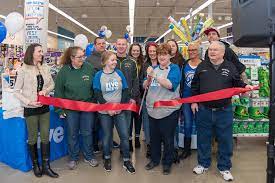In this article, you will find out Welder’s Job Description, Roles/Responsibilities, Qualifications, and what is expected of them.Information Guide Nigeria
Welder job description: A Welder is a specialist that is in charge of constructing metal parts or fixing damage in components by utilizing heavy machinery that produces great heat, melting the metals into shape.
Welders are in charge of the machines that make and repair metal structures, tools, and equipment. These skilled workers are employed in a wide range of industries, including automotive, construction, and manufacturing. Other responsibilities include planning layouts and measurements, as well as testing welded surfaces.
Welders often have experience with household fittings and welds ranging from light fixtures to ductwork. They may work on-site as well as in-house to accomplish work on time and within budget for customers.
Welding is a specialised position in the manufacturing industry that is frequently an important element of the product creation process. Welders are responsible for interpreting blueprints, calculating welding measurements, and meticulously welding whatever is required. They must understand manufacturing safety concerns and may be required to execute cutting, soldering, or brazing operations. Focus on generating compelling welder job descriptions to attract competent welders.Welder Job Description
A welder is a skilled individual who uses a welding technique with certain settings to fuse different metals in order to get desired weld shapes. They can employ any of the welding methods such as SMAW, GMAW, GTAW, FCAW, and so on. Welders also oversee machinery that repairs and manufactures tools, metal structures, and equipment. Welders are needed in nearly every contemporary industry, including construction, industrial, automotive, and space organizations. Furthermore, welders examine welding fields and create layouts. So, check over the welder job description and make sure you understand everything.
Welders cut and fill metal components and products with a variety of equipment. They accomplish this by employing several forms of heavy gear to generate extreme heat. Welders check objects that need to be welded, oversee the operation, and maintain the apparatus.JAMB Portal
Responsibilities of a Welder
- Welds small, medium, and large diameter pipe of various metals and alloys expertly.
- Copper pipe soldering and brazing.
- Executes sophisticated mechanical installations in accordance with technical specifications.
- Understands and reads construction designs and requirements.
- Pipes, equipment, and other mechanical systems are laid out and installed in accordance with construction designs and requirements.
- Marks as-built status on construction plans and specifications.
- Orders tools, equipment, supplies, and materials for the group’s task needs in accordance with business policy and procedure, in collaboration with Thermal Systems Engineers and the Site Construction Manager.
- Collaborates with other crews and lead people.
- Keeps track of all tools and equipment assigned to the group.
- Plan layout and processes by reading blueprints and drawings and taking or reading measurements.
- Determine the best welding equipment or process depending on your needs.
- Set up welding components in accordance with specifications (e.g. cut material with powered saws to match measurements)
- Use angle grinders to prepare the pieces to be welded.
- Align components with calipers, rulers, and clamping pieces.
- Weld components in various places using manual or semi-automatic welding equipment (vertical, horizontal or overhead)
- Welding parts and filling gaps are used to repair machines and other components.
- To detect defects, test and examine welded surfaces and structures.
- Keep equipment in good working order so that safety is not jeopardized.
- To plan layouts, interpret blueprints, drawings, and measurements.
- Weld tiny and huge parts like copper pipes, beams, and pipelines.
- For industrial welding, use specialized equipment and supervise machines that do the same thing.
- All machinery must be maintained and repaired.
- Examine welded surfaces, structures, and components for flaws.
- Wearing heat-resistant gloves, protective masks, and safety shoes is required to follow and enforce rigorous safety requirements.
- Check the machinery for proper usage and temperature.
- Weld components flat, vertically, and above.
- Examine blueprints and drawings.
- Measure and record data
- For best efficiency, always adhere to specifications and directions.
- Weld components by hand or with semi-automatic welding equipment.
- Machine repair
- Layouts and processes should be planned.
- Determine the best welding equipment or apparatus to employ.
- Set up welding components
- Align components with calipers, rulers, and clamping pieces.
- Report machine and equipment damage.
- To detect defects, test and examine welded surfaces and structures.
- Keep equipment in good working order so that safety is not jeopardized.
- Assemble/fabricate metal structures and equipment
- Follow the health and safety programs.
- Fit/weld in accordance with the drawing parameters.
- Obey top officials’ directions.
- Notify management of any necessary maintenance activities.
- Examine the items and make a list of them.
- Read blueprints, drawings, and diagrams.
- Keep track of the parts and keep an inventory of them.
- Maintain a nice and clean work environment.
- Maintain timeliness and keep regular time logs
- Keep safety reports and laws in mind.
- Use mobile cranes
- Material handling from machine to machine
- Carry out preventative maintenance.
- Produce metal items in accordance with employer specifications.
- Give people advice and training.
- Metal constructions of various sizes must be repaired.
- Set up and carry out welding tasks
- Respect one another in work.
- Use simple hand tools.
- If another responsibility is assigned, I am willing to work it.
- Fabricate new metal components in line with product data sheets and all applicable safety and performance requirements.
- Restore complete functionality and safety performance by repairing metal components.
- Solve challenges and provide inventive solutions to unusual situations that necessitate a new approach while preserving essential safety, stability, and security requirements.
- Maintain professional-level tools and equipment. Maintain a clean and organized work environment to provide a safe and functional work environment.
- Workflow must be coordinated with other team members and third-party agents.
- Professionally execute specified welds, inspect work pieces for flaws, and measure work pieces using straightedges or templates to guarantee conformity with specifications.
- To execute huge and difficult tasks, you may work alone or with a small team of other welders. In addition to fabrication activities, manage workflow, fulfill deadlines, and resolve problems on a regular basis.
- To execute all welding jobs, use physical strength and endurance.
- Before beginning a project, read and comprehend blueprints.
- Obtaining the components for the project
- Material measurement and cutting to specs
- Welding materials are used to connect metals together by employing the proper materials.
- Checking completed work to ensure that it adheres to the specifications specified on the blueprints
Roles of a Welder
Welders are people who shape and change metal objects at factories and building sites. They can work with things of any size, from tiny pipes and car parts to huge steel beams that make up a building’s structure. Welders follow detailed instructions to do their part in building a project, and they carefully check their work for flaws and mistakes to make sure the projects are safe and sound. Welders might help set up scaffolding so that people can reach high places or get into small spaces. They are taught about safety in the workplace, such as what kind of protective gear they need in different situations.NYSC Portal
Welder job qualifications/skills
- Proven skill as a welder
- Experience using a wide range of welding tools and techniques (TIG, MMA etc.)
- Knowledge of how to use electrical or hand tools (saws, squares, calipers etc.)
- Capable of reading and understanding technical documents and drawings
- Knowing about safety standards and being willing to wear protective gear (face-shield, gloves etc.)
- Skill and careful attention to detail
- Able to speak English well
- You must finish a relevant apprenticeship program successfully.
- AWS welding certification, for example, is a good thing to have.200 Romantic Love Messages for her
Welder salary structure in USA
How much does a Welder make in the United States? In the United States, the average welder salary is $39,000 per year, or $18.75 per hour. Entry-level salaries begin at $34,125 per year, with most experienced professionals earning up to $50,700 per year.105 Good Morning My Love Messages
Check: JAMB Result
Check and Confirm: How much is Dollar to Naira today





